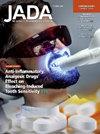1个或2个种植体支持下颌覆盖义齿的效果
IF 3.5
2区 医学
Q1 DENTISTRY, ORAL SURGERY & MEDICINE
引用次数: 0
摘要
作者进行了一项全面的系统综述,以评估现有综述的方法学质量,并比较单种植保留下颌覆盖义齿(1i-MOs)和2种植保留下颌覆盖义齿(2i-MOs)的临床和以患者为中心的有效性。纳入的研究类型基于2024年6月通过PubMed、Scopus、Embase、Web of Science、Cochrane Library和欧洲灰色文献信息系统(System for Information on Grey)通过OpenGrey数据库在MEDLINE上进行的全面文献检索,纳入了对i- mo和i- mo进行meta分析和不进行meta分析的系统综述。独立审稿人进行研究选择、数据提取和分析。主要结果是种植体丢失和假体失败。次要结局包括边缘骨质流失、一般并发症和维持需求、生活质量、患者满意度、咀嚼功能和成本-效果。使用系统评价中的偏倚风险工具来评估研究中的偏倚风险。结果在2,289份初始记录中,8篇系统评价(5篇纳入meta分析,3篇未纳入meta分析)符合纳入标准(κ = 0.90)。一些荟萃分析提供了强有力的短期证据,支持i- mo治疗种植体丢失、假体失效和边缘骨丢失。然而,由于结果不显著和95% ci宽,长期有效性仍不确定。以患者为中心的结果(满意度、生活质量、一般并发症和维持需求)尚无定论,提示需要进一步研究。纳入的评价中,偏倚风险低的为62.5%,高的为37.5%。结论和实际意义尽管一些证据表明i- mo可以在短期内减少种植体丢失、假体失效和边缘骨丢失,但大多数比较的结果显示没有临床意义的差异,或者由于结果不显著和95% ci宽而不确定。考虑到一些研究存在相当大的偏倚风险,需要进一步精心设计的研究来证实这些潜在的益处。本文章由计算机程序翻译,如有差异,请以英文原文为准。
Effectiveness of mandibular overdentures supported by 1 or 2 implants
Background
The authors conducted an umbrella systematic review to evaluate the methodological quality of existing reviews and compare the clinical and patient-centered effectiveness of single implant–retained mandibular overdentures (1i-MOs) with 2 implant–retained mandibular overdentures (2i-MOs).
Types of Studies Reviewed
Systematic reviews with and without meta-analyses on 1i-MO and 2i-MO were included on the basis of a comprehensive literature search performed in June 2024 across MEDLINE via PubMed, Scopus, Embase, Web of Science, Cochrane Library, and System for Information on Grey Literature in Europe via OpenGrey databases. Independent reviewers performed study selection, data extraction, and analysis. Primary outcomes were implant loss and prosthesis failure. Secondary outcomes included marginal bone loss, general complications and maintenance needs, quality of life, patient satisfaction, masticatory function, and cost-effectiveness. The Risk of Bias in Systematic Reviews tool was used to assess the risk of bias in the studies.
Results
Of the 2,289 initial records, 8 systematic reviews (5 with meta-analyses and 3 without) met the inclusion criteria (κ = 0.90). Some meta-analyses provided strong short-term evidence favoring 1i-MO for implant loss, prosthesis failure, and marginal bone loss. However, long-term effectiveness remains uncertain due to nonsignificant results and wide 95% CIs. Patient-centered outcomes (satisfaction, quality of life, general complications and maintenance needs) were inconclusive, suggesting the need for further research. Risk of bias was low in 62.5% and high in 37.5% of the included reviews.
Conclusions and Practical Implications
Although some evidence suggests 1i-MO may reduce implant loss, prosthesis failure, and marginal bone loss in the short term, results of most comparisons showed no clinically meaningful differences or were inconclusive due to nonsignificant results and wide 95% CIs. Given the considerable risk of bias in some studies, further well-designed research is needed to confirm these potential benefits.
求助全文
通过发布文献求助,成功后即可免费获取论文全文。
去求助
来源期刊

Journal of the American Dental Association
医学-牙科与口腔外科
CiteScore
5.30
自引率
10.30%
发文量
221
审稿时长
34 days
期刊介绍:
There is not a single source or solution to help dentists in their quest for lifelong learning, improving dental practice, and dental well-being. JADA+, along with The Journal of the American Dental Association, is striving to do just that, bringing together practical content covering dentistry topics and procedures to help dentists—both general dentists and specialists—provide better patient care and improve oral health and well-being. This is a work in progress; as we add more content, covering more topics of interest, it will continue to expand, becoming an ever-more essential source of oral health knowledge.
 求助内容:
求助内容: 应助结果提醒方式:
应助结果提醒方式:


